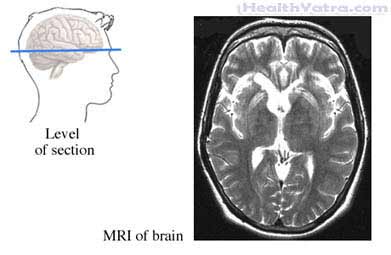Definition
A febrile seizure is a convulsion (shaking, twitching, muscle tightness) or fainting associated with a fever. It occurs in infants or small children. This seizure is not associated with any other illness or medical condition except the fever.
There are two types of febrile seizures called simple and complex. They are determined by the length of seizure, how often they recur and recovery characteristics:
- Simple febrile seizures:
- Convulsions last between a few seconds to 15 minutes
- Seizures are followed by a period of confusion and sleepiness which slowly goes away
- Complex febrile seizures:
- Last longer than 15 minutes
- Occur more than once within 24 hours
- Convulsions which affect only part the body
Febrile seizures can be alarming. Fortunately children tend to outgrow these seizures. There is also a very low risk for long term physical or mental disorders.
Causes
High body temperature due to a fever is believed to trigger the seizure. The fever is most often caused by common viral infections. Some febrile seizures may be caused by fever after routine immunizations.
Risk Factors
Age is the greatest risk factor. Febrile seizures occur between the ages of three months to five years. Most febrile seizures occur in children between 6 months to 3 years of age. In general, the younger the age that the first febrile seizure occurs, the more likely it is that a child will have another seizure.
There is some evidence that a tendency for febrile seizures may run in families.
Symptoms
Signs of a febrile seizure include:
- A fever, usually above 102°F (38.9ºC)
- Convulsion (jerking or stiffening muscles)
- Abnormal eye movements
- Coarse breathing sounds during the convulsion
- Loss of consciousness
- Loss of bladder or bowel control
- Vomiting
- Brief period of drowsiness or confusion following a seizure
The seizure typically lasts anywhere from a few seconds to a few minutes.If you suspect your child is having a febrile seizure, stay calm and follow these steps:
- Unless the doctor has told you otherwise, call 911.
- Protect from physical injury. Place your child on the floor or bed away from any hard or sharp objects.
- Protect the airway. Do not place anything in the mouth during the convulsion. Turn the child’s head or body to the side. This will allow saliva or vomit to drain from the mouth.
- Watch the time. The length of the convulsions should be less than five minutes.
Diagnosis
Your doctor will diagnose febrile seizure based on information of the seizure and your child’s health. The doctor will also look for other medical conditions that can cause a seizure and fever. They include meningitis, encephalitis, or any other intracranial disease. Your doctor will rule these out before diagnosing a febrile seizure.
To determine the source of the fever or rule out other conditions your doctor may order:
- Blood tests
- Urine tests
- Lumbar puncture —procedure to remove a sample of spinal fluid to look for meningitis or encephalitis
Additional evaluations of the brain may be needed after complex febrile seizures. This is done to look for any injuries due to prolonged or severe seizures. Tests may include:
- CT scan —a type of x-ray that uses a computer to make pictures of structures inside the head
- MRI scan —a test that uses magnetic waves to make pictures of structures inside the head
- Electroencephalogram (EEG)—a test used to evaluate brain function or disorders

Treatment
Children will eventually outgrow febrile seizures. The treatment goal is to manage fevers that may cause seizures. This may be done by addressing the underlying infection. The treatments may include medication.
Medication
To address the underlying cause of fever your doctor may recommend:
- Antibiotics or antiviral medications
- Acetaminophen or ibuprofen to fight the fever
Note: Aspirin is not recommended for children or teens with a current or recent viral infection. This is because of the risk of Reye’s syndrome. Ask your doctor which other medicines are safe for your child.Your doctor may recommend a rectal valium gel. This gel can interrupt seizures. It may be recommended if your child has frequent seizures and the seizure lasts more than 4-5 minutes.
Prevention
About 30% of children will suffer another febrile seizure when they have a fever. Unfortunately, a fever can happen suddenly. The seizure can be the first sign. Simple febrile seizures can be scary but do not harm the brain. As a result preventative treatment is often not recommended.
Daily antiseizure medicine may prevent seizures in children with prolonged or frequent seizures. Examples of these medicines are phenobarbital and valproic acid . These medicines do have significant side effects. Talk to your doctor about preventative medication.
Follow up with your doctor as recommended. Very few will develop long term problems like adult- epilepsy. There is less than 1% risk for of developing adultepilepsy in a child with a simple febrile seizure. This risk is higher for children with:
- A complex febrile seizure
- Problems in development before the febrile seizure
- A family history of a seizure disorder
